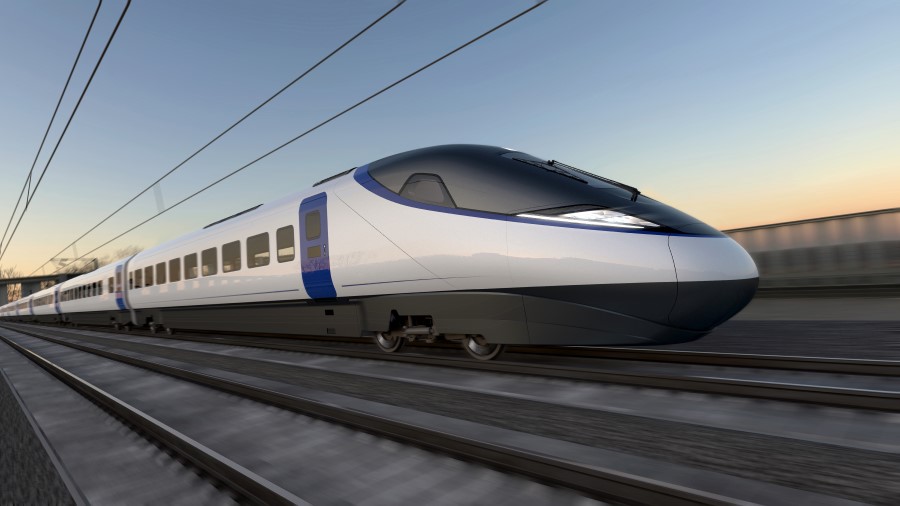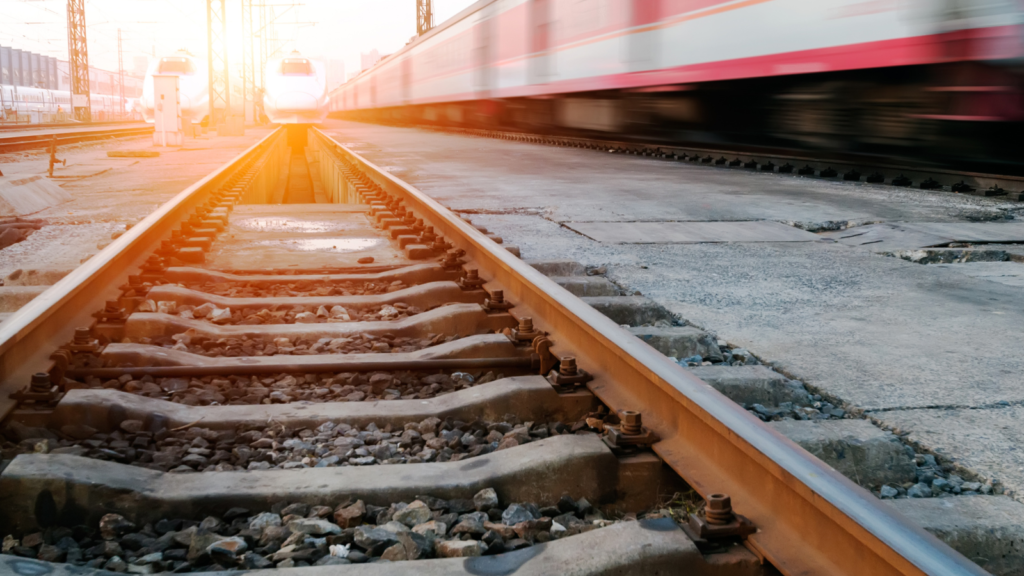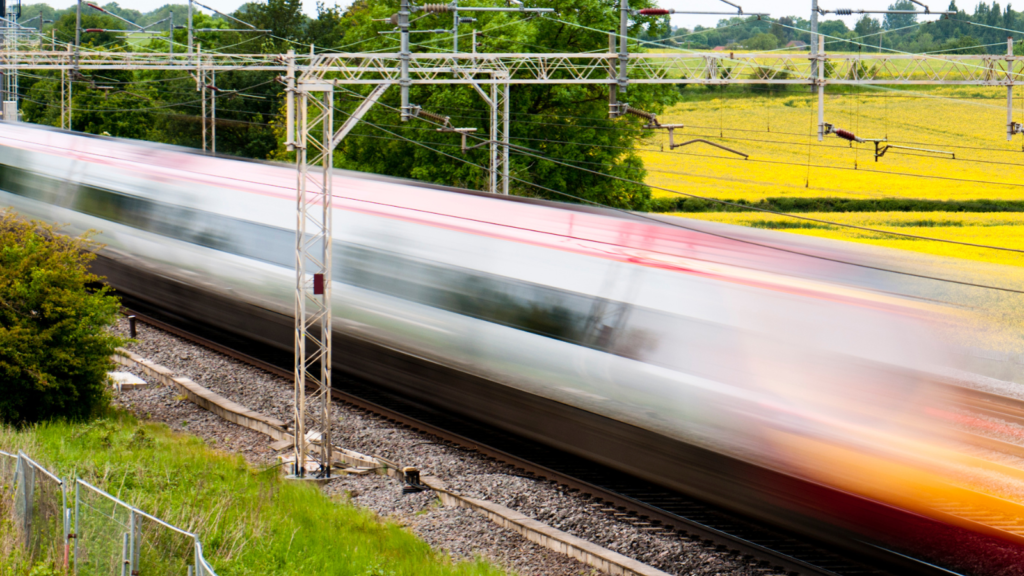
Donald Houston and Rebecca Riley discuss the scrapping of HS2 and the significant economic impact on the North of the UK. This blog was originally written for the Birmingham Business School Blog.
A branding failure
HS2 has always suffered from a branding failure. HS2 sounds rather anodyne and the ‘2’ reminds those north of London that they were only playing catch-up on London’s existing HS1 to the south (the Channel Tunnel rail link). Given inevitable controversies around cost and damage to areas of landscape beauty, ‘Green Rail’ might have been a more visionary sell, demonstrating the longer-term environmental benefits (particularly aiding the transition to net zero).
Emphasising faster travel times into London was never going to resonate with travellers in cramped, delayed or cancelled low-speed trains in the north of England. Selling HS2 (or Green Rail) as part of a UK-wide strategic expansion and upgrade of the rail network to add essential capacity and take cars and lorries off roads would have gained more political traction and popularity – and made it less easy to axe halfway through construction.
For Birmingham, the link to Manchester probably had more positive transformational potential – echoing the view that better connections between northern cities are a greater priority than faster connections to London.
The Birmingham-London HS2 leg always risked attracting London commuters to Birmingham. For Birmingham, the link to Manchester probably had more positive transformational potential – echoing the view that better connections between northern cities are a greater priority than faster connections to London.
Blowing the whistle after the train has departed
Now that we’re only getting London-Birmingham, the main effect of HS2 will be to further expand and strengthen London’s labour market. There is a strong strategic case for axing London-Birmingham and keeping Birmingham-Manchester – but too late of course, since construction on the southern leg is already well underway.

Given that HS2 is already being built and other investments are planned around it, blowing the whistle after the train has departed will do damage to investor confidence beyond the immediate scaling back – and blow a major hole in planned allied upgrades of existing lines in the Integrated Rail Plan for the North and Midlands. Important innovation, skills formation, and jobs in rail engineering of benefit beyond HS2 could be lost. A crucial question is what will replace HS2 to deliver quality and capacity on Britain’s rail network and how committed to Levelling Up the UK Government really is.
By scrapping HS2 north of Birmingham, almost by accident, the UK’s wealthiest region (London) gets both of the UK’s High Speed rail lines – HS1 to the Channel Tunnel and HS2 to Birmingham. It would be hard to design a better Levelling Down policy.
Additional network capacity and levelling up
An important strategic argument for building HS2 was to provide additional network capacity to move freight off the roads (existing routes don’t have sufficient bridges and other clearances to allow for larger loading gauges to enable a smooth transition between road and rail).
Each train would take 76 lorries off the roads, easing road congestion and moving freight onto greener more efficient trains. Now that the majority of HS2 is cancelled, how will this capacity be absorbed by an already overburdened road network?
The strategic argument for HS2 evolved with the policy focus shifting over time to help ‘Level Up’ the economically left behind places in the north. So why didn’t construction start in Manchester (if not Glasgow) and head south? That way, at least the North would have got something when the money ran out. Many voters can’t see why so much taxpayers’ money is going towards getting to London quicker. Positioning this major transport investment as tackling road congestion, freeing up local rail lines by removing intercity trains and reducing the carbon footprint of freight would resonate much more with voters’ concerns.
By scrapping HS2 north of Birmingham, almost by accident, the UK’s wealthiest region (London) gets both of the UK’s High-Speed rail lines – HS1 to the Channel Tunnel and HS2 to Birmingham. It would be hard to design a better Levelling Down policy. But favouring London isn’t really an accident – it’s the result of a ‘London first’ mentality that runs deep in Whitehall. Public spending per capita is substantially higher in London than any other English region, with transport forming an important part. Throw in a poorly articulated strategic case for HS2, poor planning leading to spiralling costs and the Sunak Government’s wavering commitment to Net Zero and Levelling Up – and we get a disastrous decision for the UK’s long-term future made by two men out-of-step with the majority bowing to short-term financial and political pressures.
HS2 was never the best Levelling Up policy to start with – but, the segments north of Birmingham were certainly better than nothing.
The Economic Case
Economic evaluation showed London was always going to benefit the most from HS2 due to its high travel volumes. Stopping at Birmingham will only add to this concentration of benefit in London. This benefit – as captured in the economic case – will now accrue ever more to existing rail users travelling to London, i.e. mostly quite high earners travelling to the UK’s richest city. So HS2 was never the best Levelling Up policy to start with – but, the segments north of Birmingham were certainly better than nothing.
The economic case for HS2 never fully reflected its strategic aims for freight modal shift, Levelling Up and reaching Net Zero. This is because the traditional view of transportation investments mainly focuses on reducing travel times for existing travellers. It underplays the less obvious impacts, such as changes in land use and the economic benefits of larger markets created by improved transportation, which for major investments like HS2 could potentially be huge. This is the result of scars borne after ‘predict and provide’ for trunk roads in the 1980s accelerated to shift of both passengers and freight from rail to road. But generating traffic on the most environmentally sustainable mode of transport (rail) is a million miles away from generating traffic on roads.
What next?
It would be easy to get hung up on HS2. It’s fast and shiny and promises great things. Other major European nations have much more of it than the UK and we’re being left behind. All true, but the priority for Britain’s rail network is more capacity to deal with overcrowding and delays and to get more passengers and freight off the roads and out of the air. HS2 adds capacity, enhanced by planned conventional rail investments to feed into it. Yet HS2 itself runs north-south, adding little to the most overcrowded east-west routes, especially in northern England.

The most important question facing the UK’s rail industry is what the investment strategy is, now that two politicians have ripped up a major component of the current plan that has been well over a decade in the making. Britain’s railways urgently need more capacity after 25 years of growth in volumes that the semi-failed competitive franchising model struggled to keep up with, with huge institutional and regulatory churn. Whether new capacity is high-speed or not is almost by-the-by. The British rail network needs to be able to walk before it can run. Rail only needs to be slightly faster than road enhanced with decent on-board services (Wi-Fi and mobile networks, comfort and catering) to be attractive to intercity travellers. Being able to get a seat on a train that arrives on time would be a good start for many routes.
Here’s hoping for the much-needed UK-wide strategic rail investment plan for the rest of the 21st century, seen through to completion that isn’t axed or altered once the going gets tough.
This blog was written by Donald Houston, Professor of Regional Economic Development and Rebecca Riley, Associate Professor for Enterprise, Engagement and Impact, City-REDI / WMREDI, University of Birmingham.
Disclaimer:
The views expressed in this analysis post are those of the authors and not necessarily those of City-REDI / WMREDI or the University of Birmingham.

Hi Donald Houston and Rebecca Riley,
I thoroughly enjoyed reading your insightful analysis on the scrapping of HS2 and its potential economic repercussions, especially for the North of the UK. The emphasis on the branding failure and the unintended consequences of the decision shed light on the complexity of transportation investments.
Considering the evolving landscape, it’s crucial to focus on alternative solutions for the UK’s rail network. Have you explored potential collaborations with existing platforms like ‘https://www.cheaptraintickets.co.uk/’ to enhance accessibility and affordability for commuters? A well-thought-out strategy could significantly contribute to addressing the challenges discussed in your blog.
Looking forward to your continued analyses and discussions on the future of UK transportation.